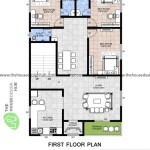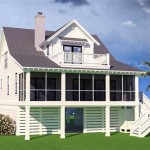Tiny houses on wheels are becoming more and more popular, with people embracing the minimalist lifestyle and downsizing their living space. Tiny homes offer a unique living experience, with a cozy and efficient layout that is designed to maximize space. Floor plans are a crucial part of the design process for any tiny home, and it’s important to know what works best for your lifestyle and budget. Here are some useful tips and tricks for designing your own tiny house on wheels.
Maximizing Space
When designing a tiny house on wheels, it’s important to focus on maximizing the usable space. Every inch matters, so be sure to make the most of every square foot. Think vertically and use the walls and ceiling to your advantage. For example, you can use loft beds, wall-mounted shelves, and hanging racks to create additional storage space. Consider the location of windows, doors, and plumbing so that they don’t take up too much space. And be sure to choose furniture that fits your lifestyle and won’t take up too much room.
Choosing a Layout
When it comes to tiny house floor plans, there are endless possibilities. The most common layouts are the single-room layout, the two-room layout, and the three-room layout. The single-room layout is the simplest and most efficient option, as it combines the living space, kitchen, and bathroom into one main area. The two-room layout is a bit more spacious, with a separate living area and sleeping area. The three-room layout is the most spacious option and includes a separate living area, sleeping area, and kitchen. You can also combine and customize these layouts to suit your unique needs and preferences.
Incorporating Amenities
When designing floor plans for tiny houses on wheels, it’s important to consider the amenities you need and want. Do you need a full-sized kitchen? A dining area? A bathroom with a shower? Once you’ve determined your needs, you can start to incorporate these amenities into your floor plan. For example, you can install a full-sized kitchen with a full-sized fridge, range, and sink. Or, you can opt for a mini kitchen with a mini fridge and stovetop. Be sure to choose appliances that are energy efficient and won’t take up too much space.
Choosing the Right Materials
When it comes to tiny houses on wheels, it’s important to choose the right materials for the job. You’ll want to choose materials that are durable, lightweight, and easy to maintain. Wood is a popular choice, as it looks great and is easy to work with. However, metal is a great option as well, as it’s strong and lightweight. Be sure to choose materials that are fire resistant, as tiny houses on wheels are required to meet certain fire safety standards. And be sure to choose materials that are easy to clean and maintain, as your tiny house will need to be cleaned and maintained regularly.
Conclusion
Designing a tiny house on wheels is an exciting and rewarding experience. Floor plans are a crucial part of the process, and it’s important to consider your needs and budget when designing your layout. Be sure to maximize the usable space, choose a layout that works for your lifestyle, incorporate the amenities you need, and choose the right materials. With careful planning, you can create a tiny house on wheels that is both cozy and efficient.















Related Posts








